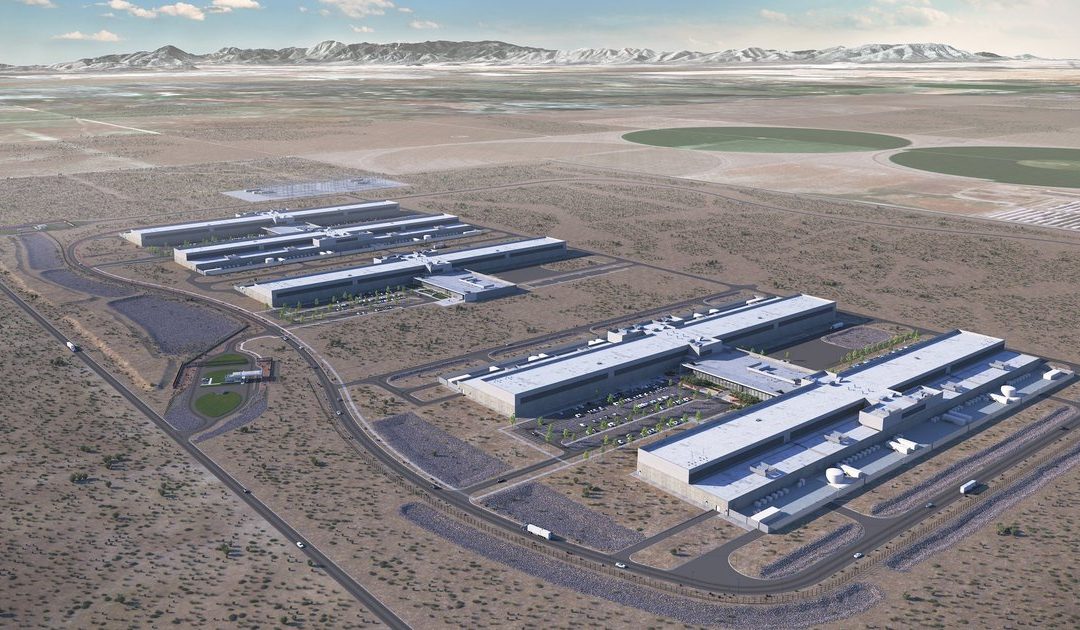I’m back on the road, this time in Salt Lake City. SLC is THE major hub for East –> West long-haul fiber (see image 1 with fiber long haul routes). That’s been the case for a while now, but SLC has been growing economically and in population since around 2010. It seems to be slowing a bit and according to Oxford Economics, Salt Lake City had been growing at 1.4% until the pandemic slowed everything down. Since then, SLC has recovered 94% of its jobs and should be back to pre-pandemic levels soon. GDP growth is expected to be around 2%. Not to mention the city is looking to, once again, host the Winter Olympics in either 2030 or 2034, which always drives large infrastructure investments. I expect the economic trends in SLC to continue to move up and to the right. All this economic activity has helped to drive a large expansion and modernization of internet infrastructure and data center growth for the area. On the residential side, SLC got a lot of help thanks to Google Fiber having built a new network, starting in Provo, Utah in 2013 and expanding into Salt Lake City in 2015. This move by Google pushed Centurylink and Comcast to start really upgrading and expanding their network in response, turning SLC into a fairly well-connected city with great rates. There is also the option to pick up Rise Broadband and their fixed wireless service in SLC, which would make a good backup to a wired connection.
On the data center side, there has been an impressive amount of investment as well. Some big names such as Aligned and DataBank have announced large expansion plans, as well as some lesser-known players like Novva who are making some waves in town. You also have expansions of private data centers from the hyperscalers as well, such as Google and Meta. Meta alone has made a large investment in their Eagle Mountain data center campus, that, once complete, will be an astounding 4.5 million square feet. The thing about the data center industry, the more data centers that pop up in one area, the more always follow, so expect to see continued expansion of data centers in the area. Where more data centers pop up, you see more investment in the enterprise fiber networks to support those data center customers.

Why Salt Lake City though? We all know when people think of Salt Lake City they tend to think about the Mormon Tabernacle, which isn’t exactly the image of a modern and technology forward area. From what I’ve seen, being here the last few days, the city is fairly young and progressive. There is a good deal of technical talent here, and due to the lower cost of living versus Silicon Valley, it’s not all that difficult to lure talent away from SV(Silicone Valley) which is less than 800 miles away. Location wise, it’s a good backup to Silicon Valley. It’s a cold desert with low humidity and few natural disasters to worry about. Cost wise, Utah also has good rates for electricity and natural gas. Like many other cities and states now, there are sales tax waivers (S.B. 114) for the data center operator and for data center customers on certain types of hardware & equipment. All in all, it makes sense we are seeing an increase in data center activity in the area.
As I mentioned in an earlier blog post, when I’m in a new city, I scope out telecom infrastructure, from the splice points and manholes in the sidewalks, the orange paint left on the roads from survey work, even the orange tipped posts along streets and highways. As I was walking around SLC, one thing that jumped out at me about the fiber surveys that had been done was that they don’t only tag the street where there is fiber below, but they also note the fiber provider. I saw plenty of Verizon fiber (still labeled MCI) as well as LMN (Lumen), Z (Zayo) and more (see image 2 for Zayo Splice point with markings). When I got back to the hotel room, I checked my fiber maps and sure enough these match up.

For most applications, latency won’t be an issue, as shown below:
SLC <-> Seattle: ~12ms
SLC <-> Silicon Valley: ~10ms
SLC <-> Vegas: ~6ms
SLC <-> Denver: ~6ms
SLC <-> LA: ~9.5ms
SLC <-> Phoenix: ~8.5ms
Overall SLC is a good, centrally located region to service the west coast and mountain regions, that is also safe from most natural disasters, has plenty of local talent, and connectivity options. Give us a call to discuss your next data center deployment and let’s see if SLC is a good option to reach your goals.


